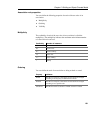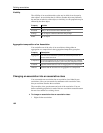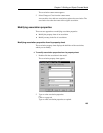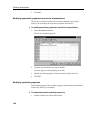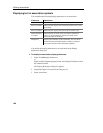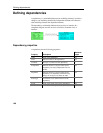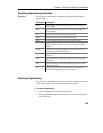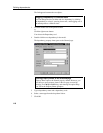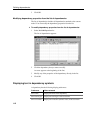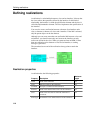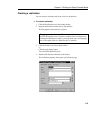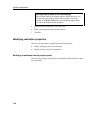
Chapter 2 Building an Object-Oriented Model
109
Analyzing dependency properties
You can select a stereotype for a dependency from the following several
default values:
Stereotype Description
access Public contents of the target package that can by accessed by the
source package
bind Source object that instantiates the target template using the given
actual parameters
call Source operation that invokes the target operation
derive Source object that can be computed from the target
friend Source object that has special visibility towards the target
import Everything that is declared as public in the target object becomes
visible to the source object, as if it were part of the source object
definition
include Source use case incorporates the behavior of another use case at a
location that is specified by the source
instantiate Specifies that operations on the source class create instances of the
target class
refine Degree of abstraction of the source object is finer than that of the
target object
trace Specifies that there is an historical link between the source object
and the target object
use Specifies that the semantics of the source object are dependent on
the semantics of the public part of the target object
Creating a dependency
You can create a dependency between two classes, two interfaces, or between
a class and an interface. You create dependencies in a diagram.
v To create a dependency:
1 Click the Dependency tool in the palette toolbar.
2 Drag the dependency link from the child class or interface to the parent
class or interface.
Stereotype



